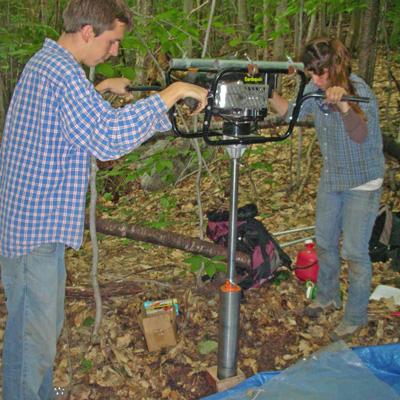Non-Destructive Soil Inventory Using Inelastic Neutron Scattering: An Application to Nitrogen Controls on Soil Carbon Storage

Forest soils can be difficult to sample because of their spatial variability, rock content, coarse root systems, and inaccessibility. Traditional methods of describing and characterizing soil require excavation, transport, drying, sieving, weighing, and laboratory analysis. Digging soil pits is destructive and labor intensive.
NSRC researchers demonstrated the use of a prototype instrument to non-destructively measure chemical elements in soils. The instrument uses inelastic neutron scattering or release of fast neutrons that are captured by a carbon (or other element) nucleus in the soil and re-emitted at lower energy along with gamma rays. Gamma radiation is measured by spectroscopy which indicates the number of carbon atoms detected. This method estimated soil carbon content of 4.2 kilograms/square meter compared to 5.4 kilograms/square meter estimated by soil pits. However, the prototype was difficult to transport in the field, and results were affected by the uneven topography of the forest floor.
Researchers also tested rotary soil coring, which uses an easily obtained, motorized, cylindrical bit and is relatively quick, enabling more samples to be collected than with soil pits for the same time and cost. Unfortunately, they found elevated concentrations of exchangeable base cations (calcium, magnesium, potassium, and sodium) in cored soils, presumably due to grinding of rock and soil during excavation. However, rotary coring was appropriate for describing soil carbon and nitrogen and may be more attractive than soil pits because greater numbers of samples can better characterize forest soils, which have high spatial variation.
Download printable version [PDF]
Download full final report [PDF]
